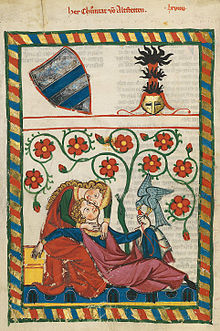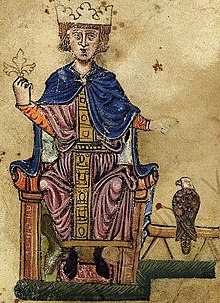Bibliotheca Palatina




The Bibliotheca Palatina ("
The important collection of German-language manuscripts have shelf-marks beginning cpg (older usage: Cod. Pal. ger., for "Codices Palatini germanici"), while the vast Latin manuscript collection has shelf-marks with cpl (or Cod. Pal. lat., for "Codices Palatini latini").
Foundation
In the 1430s, Elector
Further important manuscripts were acquired from the collection of
Thirty Years War
The Palatinate suffered heavily in the
Maximilian originally wanted to add the Bibiliotheca Palatina to his own library in Munich.
The Bibliotecha was a prominent prize captured during the Thirty Years' War. The victors were concerned not just with carrying away the collection and thus stripping the Calvinist party of one of its most important intellectual symbols; they also had wanted to eliminate all documentation of the library's provenance. The capture of the Palatine library was a carefully orchestrated symbolic act of looting in the Thirty Years' War, and triggered further acts of similar confiscations throughout the course of the hostilities.[1]
Thus, as of 1623, the entire remaining library had been incorporated into the
By the
For the University Jubilee, some other books were temporarily brought back from the Vatican and were displayed at the Heiliggeistkirche in 1986.
See also
- Index of Vatican City-related articles
References
- ^ JSTOR 3648986.
- ^ ISBN 978-9004183568.
- ^ a b c The Classical Journal for March and June 1816, page 212.
- ^ Luther: Lectures on Romans, ed. by Wilhelm Pauck. Westminster John Knox
Press, 1961. ISBN 0-664-24151-4. Page xxii.
Further reading
- Leonard Boyle (ed.): Bibliotheca Palatina, Druckschriften, Microfiche Ausgabe, München 1989–1995, ISBN 3-598-32919-9(Index)
- Elmar Mittler (ed.): Bibliotheca Palatina, Druckschriften, Katalog zur Mikrofiche-Ausgabe, Band 1–4, München 1999, ISBN 3-598-32886-9
- Ludwig Schuba, Die medizinischen Handschriften der Codices Palatini Latini in der Vatikanischen Bibliothek, Wiesbaden, 1981, Dr. Ludwig Reichert Verlag (Kataloge der Universitätsbibliothek Heidelberg 1), ISBN 3-88226-060-2
- Ludwig Schuba, Die Quadriviums-Handschriften der Codices Palatini Latini in der Vatikanischen Bibliothek, Wiesbaden 1992, Dr. Ludwig Reichert Verlag (Kataloge der Universitätsbibliothek Heidelberg 2), ISBN 3-88226-515-9
- Dorothea Walz, Die historischen und philosophischen Handschriften der Codices Palatini Latini in der Vatikanischen Bibliothek (Cod. Pal. Lat. 921 - 1078), Wiesbaden 1999, Dr. Ludwig Reichert Verlag (Kataloge der Universitätsbibliothek Heidelberg 3), ISBN 3-89500-046-9
External links
- Universitätsbibliothek Heidelberg
- Bibliotheca Palatina-digital
- Bibliotheca Palatina – The Story of a World-Famous Library
